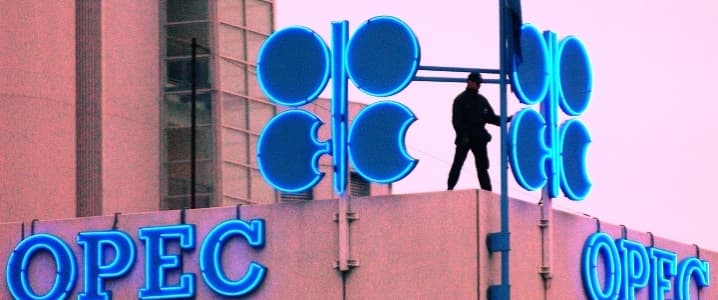OPEC’s oil production and supply cuts—now in their second year—have claimed a victim. It’s an industry that’s vital for the crude oil exports of oil-producing countries: supertanker shipping.
The supertankers, or very large crude carriers (VLCCs), are vessels capable of carrying around two million barrels of oil. As OPEC and its non-OPEC allies work to remove a combined 1.8 million bpd off the market to draw down the global glut, the number of supertankers voyaging from the Middle East to Asia, for example, has dropped.
This decreased demand coincides with a period of new-build vessels being delivered and adding to the global supertanker fleet, thus creating an excess supply of supertankers at a time when crude oil trade out of the Middle East is down. Moreover, the oil futures market is currently in backwardation (the situation in which front-month prices are higher than those for months further in the future), which makes hoarding oil in supertankers at sea uneconomical and frees more vessels, adding to the overcapacity of the global fleet.
All these factors led to a slump in supertanker average daily earnings in 2017, to their lowest since 2009 and to below initial analyst expectations.
According to Clarkson Research, the average VLCCs earnings dropped to $17,794 per day in 2017, from $41,888 in 2016, a 57.5-percent slump. The average 2017 earnings were the lowest since at least 2009, according to Clarkson data cited by Bloomberg.
Just before the OPEC/non-OPEC production cuts began in January 2017, analysts had revised down in December 2016 their forecasts for tanker earnings by 12 percent for 2017, expecting the worst year since 2013.
As it turned out, 2017 was the worst year for VLCC earnings since at least 2009.
Related: The World’s Most Expensive Oil
Prospects for the supertanker market in 2018 are also grim, especially if OPEC and allies decide at their June meeting to stick to the production cuts until the end of this year. The cartel and its friends will be reviewing mid-year the state of the oil market, and might choose to revisit the cuts if they see the market has balanced.
On top of that, newly built tankers will continue to add to the global fleet in 2018, albeit at a slower pace than in the past two years. Clarkson Research has estimated that the world’s supertanker fleet will grow by 4 percent in 2018, following 5.3-percent growth in 2017 and a 7.4-percent increase in 2016.
“If OPEC lifts the output cut in its revision in June, the rates would improve as more oil will be pumped to the market,” Olivier Jakob, managing director at Switzerland-based Petromatrix, said in an interview for Bloomberg. “But if it doesn’t, then the rates would suffer the whole year,” Jakob noted.
Overcapacity will continue to suppress any material improvement in the global shipping industry in 2018, Fitch Ratings said in a report last month.
“The tanker shipping segment is the most exposed following a glut of new vessel deliveries in 2017. We expect demand for tankers to grow by around 4 percent in 2018, helped by rising global oil consumption, higher U.S. exports and declining oil inventories,” Fitch said. “But this would still only broadly match the expected growth in tanker supply. Rates therefore may not fall further, but a sustained increase is unlikely,” the rating agency added.
According to shipping industry association BIMCO: “Not until we see global oil stocks at a much lower level, can we expect a renewed interest in seaborne oil trading activities that will lift oil tanker demand from its current subdued level. However, the first half of 2018 may pass by before that happens.”
BIMCO expects tanker demand growth this year to continue last year’s trend—growing imports in the Far East and growing exports from the U.S. This is set to benefit the VLCC market and to some extent Suezmax tankers, the association said in its preview for the 2018 market. Related: Oil Prices Slip After Lower Than Expected Crude Draw
Tanker fleet growth is expected to slow down, and demand for OPEC crude oil is expected to increase in the second half of this year, Eirik Haavaldsen at investment bank Pareto Securities told Bloomberg.
“The first half will be weak though, and probably weaker than the first half of 2017,” Haavaldsen said.
The supertanker industry is in for another challenging year amid fleet oversupply and OPEC crude oil undersupply.
By Tsvetana Paraskova for Oilprice.com
More Top Reads From Oilprice.com:
- Goldman: OPEC Will Talk Oil Prices Down If Brent Tops $70
- A Rare High-Profile Utility Takeover
- Federal Regulators Deal Huge Blow To The Coal Industry


















